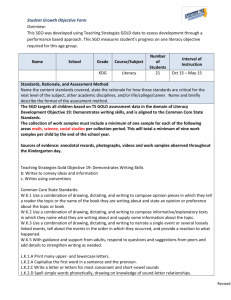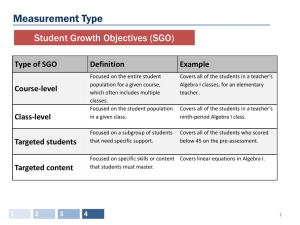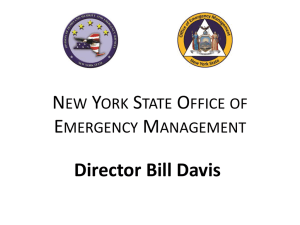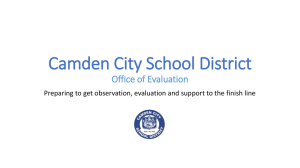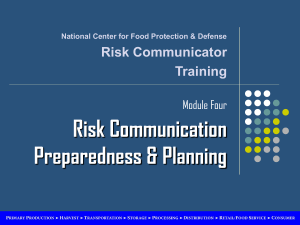How to Write a Tiered SGO - Fair Lawn Public Schools
advertisement
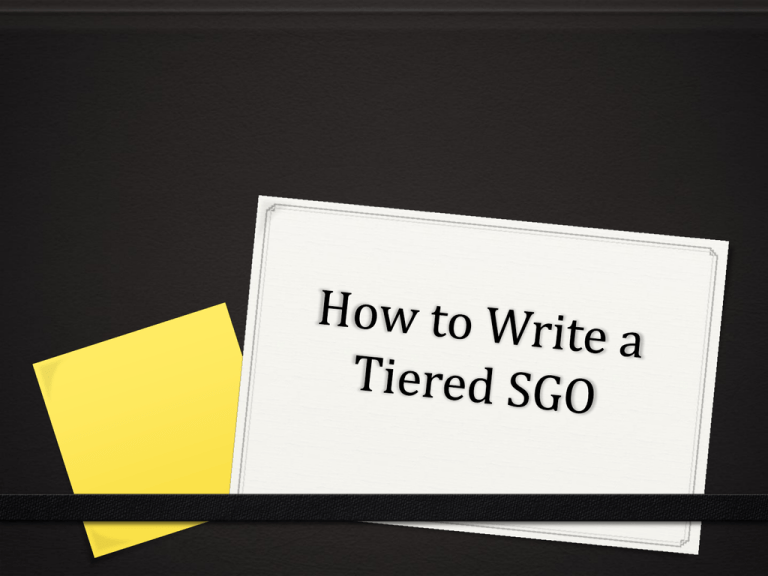
For ALL students 1. What do we expect our students to learn? 2. How will we know they are learning? 3. How will we respond when they don’t learn? 4. How will we respond if they already know it? Our end goal Why Use a Tiered SGO? 0 Teachers often have students with a wide range of preparedness and ability in a course or class. One simple SGO for all students might be too low for some students and too high for others. By breaking down SGOs into different levels based on student preparation, your goals are more likely to be ambitious and feasible for a much wider range of students. 0 Tiered SGOs provide rich data that can be used to differentiate instruction more effectively. What is the Difference between Simple and Tiered SGOs? 0 The use of Simple SGOs makes the most sense when the data suggests that students enter the class/course with relatively similar abilities or background knowledge. In this case, teachers identify the number of students who are expected to meet a single post-assessment target score. 0 Tiered SGOs are used when students enter the class/course with relatively diverse readiness levels for the content being taught. Using this method, teachers set different targets for different groups of students according to their starting points. How to Start Writing a Tiered SGO. . . 0 The basic principles used to set simple goals are applied to creating tiered goals. 0 The difference between simple and tiered SGOs becomes apparent when it is time to set post-assessment targets. Developing a Tiered SGO 0 Once you determine the focus of your SGO, you must administer a pre-assessment to students and determine the range of student scores. 0 In this example, the pre-assessment was administered to 65 students taking 9th grade Physics I. 0 The lowest score on the pre-assessment was 35% and the highest score was 80%. This is the range of student scores (35%-80%). Target Score 0 Based on the pre-assessment results, develop an ambitious and achievable post-assessment target score that indicates considerable learning. Target score on post-assessment = 80% 0 Determine how many of your students you think can reasonably achieve this target score. 50 out of 65 students (77%) who took the test will be able to achieve the target score Attainment Ranges 0 Develop a reasonable range around the above student percentage (77%) for the full (3) attainment category. **The NJDOE suggests using ranges of 10% to 15% for each attainment category. For this example, we will use a range of 14%. Since we already determined that 77% of students should reach the target score on the post-assessment, add 7 to and subtract 7 from this score. This gives you the full attainment range. The range for full attainment (3) is 70 – 84%. 0 Develop ranges for the other three categories: exceptional, partial, and insufficient. **Remember that we are using a range of 14% for this example. Ranges for this SGO are: Exceptional (4) Full (3) Partial (2) Insufficient (1) 85% - 100% 70% - 84% 55% - 69% less than 55% Simple or Tiered? Based on the full attainment range, if the teacher decided to write a simple SGO, it would state: “At least 70% of students will attain a score of 80% or above on the Physics I postassessment.” However, due to the wide range of pre-assessment scores, it is wiser to write a tiered SGO. This allows the teacher to differentiate the target score for different groups of students. Identify Student Tier Groupings 0 Low level of preparedness: Students who have yet to master pre-requisite knowledge or skills needed for this course. 0 Medium level of preparedness: Students who are appropriately prepared to meet the demands of the course. 0 High level of preparedness: Students who start the course having already mastered some key knowledge or skills. Quantify Student Tier Groupings 0 Using the pre-assessment results (which range from 35% to 80%), divide the scores into 3 equal (or nearly equal) tiers and count the number of students who scored in each group. Low Preparedness Group = 36 students scored between 35% - 49% Medium Preparedness Group = 21 students scored between 50% - 66% High Preparedness Group = 8 students scored between 67% - 80% Differentiated Targets 0 The original target score (80%) becomes the target for the Medium Preparedness Group. 0 Adjust the target score for the Low and High Preparedness Groups according to their starting points. Low Preparedness Group target score = 70% Medium Preparedness Group target score = 80% High Preparedness Group target score = 90% Tiered SGO Statement Remember, the simple SGO stated, “At least 70% of students will attain a score of 80% or above on the Physics I post-assessment.” A tiered SGO would state, “At least 70% of students in each preparedness group will meet the target score on the Physics I post-assessment.” Scoring Plan 0 Using the tier groupings and differentiated targets, complete the Scoring Plan chart. Also, calculate the number of students represented in each category. 0 To calculate the number of students in a category: 84% of 21 = .84 x 21 = 17.64 = 18 students Number of students Target in group Score Low 36 70 85-100% (31-36) 70-84% (25-30) 55-69% (18-24) <55% (0-17) Medium 21 80 85-100% (19-21) 70-84% (15-18) 55-69% (11-14) <55% (0-10) High 8 90 85-100% (8) 70-84% (6-7) 55-69% (4-5) <55% (0-3) Tier Exceptional (4) Full (3) Partial (2) Insufficient (1) **Note: The percentage of students scoring in each category remains the same—it is the number of students in each category that changes. 0 Determine the number of students in the Low Preparedness Full (3) Group by calculating: 0 70% of 36 students in the Low Group equals 25 students (.70 x 36 = 25). 0 25 is the minimum number of students in the Low Preparedness Group who must reach the target score in order for the teacher to obtain Full (3) credit for the Low Tier. 0 84% of 36 students in the Low Group equals 30 students (.84 x 36 = 30). 0 30 is the greatest number of students in the Low Preparedness Group who must reach the target score in order for the teacher to obtain Full (3) credit for the Low Tier. Thus, for a teacher to earn a FULL rating of 3 points for the Low Preparedness Tier, between 25 and 30 students in the Low Preparedness Group must earn a target score of 70% or above on the postassessment. SGO Approval Form Questions?
